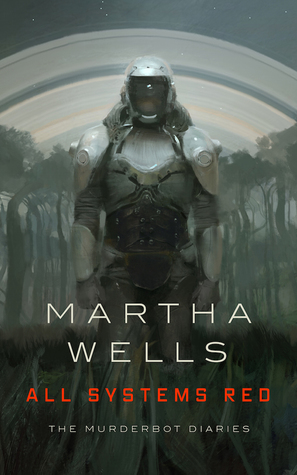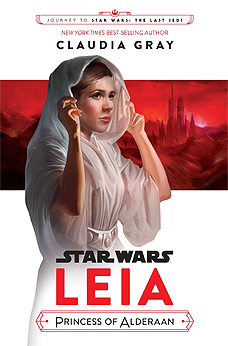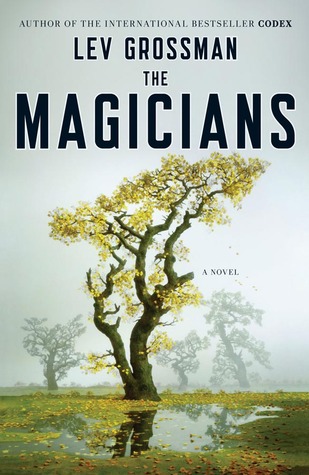 Title: Batman: The Dark Knight Returns
Title: Batman: The Dark Knight Returns
Writer: Frank Miller
Artists: Frank Miller (pencils) & Klaus Janson (ink)
Series: Batman: The Dark Knight Saga Vol. I
Rating: ****
Publisher/Copyright: DC Comics, 1986
Frank Miller’s The Dark Knight Returns is a masterpiece, though an imperfect one. The book regularly appears on or even tops lists of the most influential comics of all time, and has strongly impacted the on-screen portrayal of the titular Dark Knight ever since its publication in 1986. Along with Alan Moore’s Watchmen, The Dark Knight Returns helped usher in a new era of gritty, dark comics across the board, and helped distance the character of Batman from the lingering memories of Adam West.* It’s a seminal piece of comic book history, a must-read for any fan of the Dark Knight, and one of the best Batman stories ever written. All that said, it’s not perfect. While some elements of the story transcend the cultural milieu in which it was written or are even ahead of their time, others are incredibly dated. The plot is a bit unfocused and lacks a central antagonist, even while being an interesting character study of Batman and his supporting cast. The art…is a complicated issue I’ll get into more below.
The setting: 1986. It’s been ten years since the last sighting of the Batman, and the age of heroes is over. Superman has put away his cape and accepted a position working for the government in exchange for their ignoring his retired former compatriots as long as they keep their heads down and don’t draw attention to themselves. Martian Manhunter runs a bar. Oliver Queen turned communist and is presumed dead. Wonder Woman went back to Themyscira. Commissioner Gordon is about to retire, finally ending his never-ending battle against corruption in the GCPD. Crime across the city is rampant, and the Mutant gang rules the streets. On the world stage, the United States and the USSR are locked into the Mexican standoff of the Cold War, which is heating up as both players find themselves supporting opposing sides of a revolution on the island of Corto Maltese. Having hung up his cowl in the wake of Jason Todd’s gruesome end at the hands of the Joker, Bruce Wayne has been using alcohol to manage his emotional trauma and help him sleep, but the growing violence on the streets of his city grows to be too much to bear. He’s rusty, he’s not as young as he used to be, but he’s still the Batman. Nevertheless, he’s going to have his hands full with the likes of a not-so-reformed Harvey Dent, the Joker, and the Mutants gang…not to mention the U.S. government, which isn’t as tolerant of vigilantism as it once was, and now has the abilities of Agent Kent to deploy. Even in the face of all these obstacles, however, one thing remains true: the Batman is incapable of backing down from a challenge…even if it kills him.
First, the writing. As I mentioned, this is probably the single most influential Batman story ever written, and for one very good reason: Miller’s characterization of Batman. Miller took Batman back to his roots: a damaged man out to exorcise his demons and save his city at the same time, mostly by inflicting pain on those who would hurt the innocent. He’s older now and has to learn to fight smarter than when he was young, but he’s still Batman. Miller’s Batman is cold, relentless, a soldier fighting a war that he knows he can never win. His only goal is to hold the darkness at bay until a new generation can take up the fight – and he has a couple ideas about that, too. The characterization of Commissioner Gordon is also a strong point, painting a complex picture of a man who has faced an incredible dilemma his entire career in Gotham: to watch the city entrusted to his protection descend into (worsening) corruption and vice, becoming a haven for evil, or to endorse and enable a vigilante who operates outside the law, committing assault and battery left and right, punishing crime without even a hint of due process. Ellen Yindel, Gordon’s successor, will have to decide how to face that same dilemma. Miller also gives Gordon credit for being remotely observant: he’s only been pretending not to know Batman’s identity all these years. Fans of Superman will be less thrilled, however, as the Man of Steel’s characteristic optimism is here transfigured into fatalism regarding humanity’s view of heroes and naivety regarding his role on the world stage. It’s not exactly a negative portrayal, per se, but neither is it positive. Miller also interjects more animosity and disdain into the relationship between these two titans than do most of their incarnations. Superman believes Batman to be pigheaded and stubborn, and that his return will cause humanity to rise up and destroy those they once called heroes. Batman thinks Superman a fool who has allowed world events to reach a crisis point. Neither is entirely wrong, and that nuance is one of the strengths of the book. Other characters are not as strongly written. New Robin Carrie Kelly is not given much of a motivation for turning caped-hero, aside from the fact that Batman saves her life and she needs a father figure. The psychologist treating Harvey Dent and the Joker is a caricature of bleeding-heart liberals that blame everyone but the perpetrators for crimes, arguing at one point that Batman is the true perpetrator every crime committed by his enemies because he created them by his very existence. Contrasting this narrative is that of the various ultra-right-wing commentators that argue Batman isn’t going far enough and the gangs of reformed Mutants calling themselves the “Sons of Batman” and murdering criminals wherever they can be found. Neither characterization is subtle, but Miller uses both voices to discuss the issue of vigilantism with a level of nuance not often seen in the comics. Then you have Bruno**, a neo-Nazi thug who wears swastikas on her breasts in lieu of a shirt and where she has cut the rear out of her pants. You don’t get much more of a caricature than that. Former Robin Dick Grayson doesn’t feature here but is nevertheless mentioned briefly in a conversation between Gordon and Bruce where it is revealed that Wayne is not on speaking terms with his former protege. In contrast to the generally strong characterization, the plot is a bit unfocused. There’s no central antagonist, for one thing. Batman battles Harvey Dent and the Joker immediately after his return, fights the leader of the Mutant gang later in the story, and then battles Superman in the climax. There’s not much of an over-arching narrative, aside from Batman’s return and the powder keg that it ignites, and the book is arguably poorer for it. The social commentary is similarly all over the map. Miller explores the issue of vigilantism, and that’s a timeless debate, but a lot of his other political agenda is incredibly dated. His portrayal of Ronald Reagan is not flattering, though it can also be said that his portrayal of every politician, real or fictional, is equally negative. Miller’s Gotham has interesting hints of his future work with Sin City, minus (most of) the sex, and that’s an interesting take on things that you don’t typically see. Is Gotham an early form of Miller’s Basin City, or is Basin City what Gotham would turn into without the Batman? Given that Miller is (deservedly) in disfavor these days, due to his more modern output, I doubt this is a question that will be answered.
Finally, we have the art. A decade ago I would have told you that I simply didn’t like Frank Miller’s art across the board, but today I have to admit that it’s not that simple. Frank Miller has a specific style that serves him well in things like Sin City, where he can really lean into it and play with monotone and shadows, but when applied to a Batman comic falls a bit flat for me. It’s not that the art here is bad, but I also can’t say that it’s good. Sure, there are a few iconic moments that stand out – the image of Batman back in action for the first time in a decade, silhouetted against a bolt of lightning is iconic, and has been imitated countless times since – but on the whole the word that is best suggested by the art in this book is “mediocre.” I’m not a fan, but that is a minority opinion. Apparently, the “Millerness” of the artwork here is toned down by having Klaus Janson ink Miller’s pencils and moderate his stylization, a collaboration that, based on the sequel to this book where it was lacking, was sorely needed.
CONTENT: PG-grade language. Some fairly strong violence, PG-13 depicted “on-page,” with stronger instances happening just “off-panel.” Moderate sexual content, including the character of Bruno (mentioned above), Catwoman running an escort service (complete with politician customers), and a character clearly intended to be Dr. Ruth (though that might be lost on anyone too young to actually remember the 80s). While the book flirts with nudity in a couple places, saved from crossing that line by shadows*** or Bruno’s swastikas, the quality of the art keeps this from being at all appealing. This is not really a book for younger readers, even as the actual content may not prove traumatic, as most of what Miller is trying to do would be lost on them.
*Though I for one LOVE the zaniness of the 60s Batman television series, the effect it had on the comics was deeply unfortunate. Batman…is not supposed to be jolly. That’s all I’m saying.
**I swear that my younger, more innocent self didn’t get the significance of her name (or several of the comments made about her) when I first read this over a decade ago. Now I feel dumb.
***A common comic trick for keeping things PG, not unique to Frank Miller’s writing, though readers of Sin City will agree that he leans into it quite heavily.
 Title: All Systems Red
Title: All Systems Red
 Title:
Title:  Title:
Title:  Title:
Title:  Title:
Title:  Title:
Title: 
 Title:
Title:  Title:
Title:  Title:
Title:  Title:
Title: